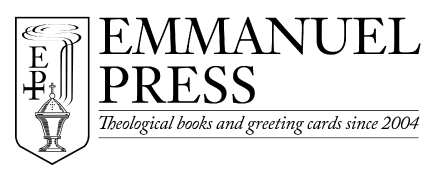THE LATEST NEWS
A Hymn for the Nativity of Saint John the Baptist
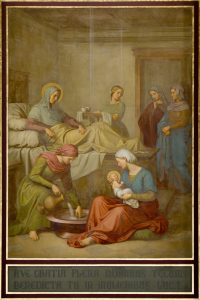
Audio: Listen to A Hymn for the Nativity of Saint John the Baptist chanted.
1. Let the example of Saint John remind us,
Ere we can meetly sing his deeds of wonder,
Hearts must be chastened,
And the bonds that bind us broken asunder!
2. Lo! a swift angel, from the skies descending,
Tells to his father what shall be his naming;
All his life’s greatness to its bitter ending
Duly proclaiming.
3. But when he doubted what the angel told him,
Came to him dumbness to confirm the story;
At John’s appearing, healed again behold him,
Chanting John’s glory!
4. Oh! what a splendour and a revelation
Came to each mother, at his joyful leaping,
Greeting his Monarch, King of ev’ry nation,
In the womb sleeping.
5. E’en in his childhood, ‘mid the desert places,
He had a refuge from the city gained,
Far from all slander and its bitter traces,
Living unstained.
6. Often had prophets in the distant ages
Sung to announce the Daystar and to name Him;
But as the Savior, last of all the sages,
John did proclaim Him.
7. Than John the Baptist, none of all Eve’s daughters
E’er bore a greater, whether high or lowly:
He was thought worthy, washing in the waters
Jesus the holy.
8. Angels in orders everlasting praise Thee,
God in Thy triune Majesty tremendous;
Hark to the prayers we, penitents, upraise Thee:
Save and defend us. Amen.
__________
Antra deserti, Paulus Diaconus, 8th century, trans. by R.E. Roberts, alt.
*At Morning Prayer: stanzas 1-4, 8; at Vespers: stanzas 5-8.
*An excerpt from The Brotherhood Prayer Book
Weedon endorses The Great Works of God: Exodus
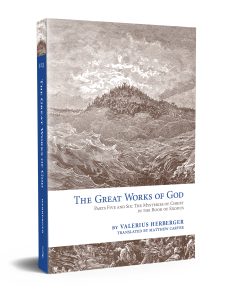 And just when you thought that the great works of God couldn’t get any greater after you’ve had the joy of Jesus all through his read of Genesis, Valerius Herberger marches into Exodus, and it’s more Jesus under every bush. Well, in every bush that burns and is not consumed!
And just when you thought that the great works of God couldn’t get any greater after you’ve had the joy of Jesus all through his read of Genesis, Valerius Herberger marches into Exodus, and it’s more Jesus under every bush. Well, in every bush that burns and is not consumed!
What a tremendous blessing translator Matthew Carver has given us to enjoy the insights of Herberger’s iconic read of the Scriptures in English. Irenaeus famously wrote that the heretics take the stones of the mosaic that is Scripture and rearrange them, so that what emerges is a picture, not of the great King, but of a fox. Herberger is no heretic! He lets the stones be just where the Spirit plops them, but by that same Spirit he opens our eyes to see in them on every page the astounding image of the great King whose love embraced a world on His cross that it might live through Him.
There is no wonder this man was regarded as the Lutheran Chrysostom. His piety burns with the fire of the Spirit and his joy in Christ is unquenchable, nourished by the Sacred Scriptures. You will be so blessed by joining Herberger on your journey and letting him be your guide in the Word. The Church owes a debt of gratitude to Matthew Carver for this labor of love, to the Master of Divinity Class of 2018 of Concordia Theological Seminary for the foresight to fund such an endeavor, and to Emmanuel Press for publishing it!
-William Weedon, Chaplain, LCMS Director of Worship
For excerpts and purchase information, visit The Great Works of God, Parts Five and Six: The Mysteries of Christ in the Book of Exodus.
On the use of ceremonies
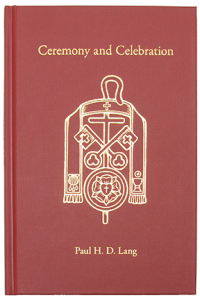 Why is it that some Christians kneel, bow, genuflect, make the sign of the cross on themselves, or hold their hands in a particular fashion during the Divine Service? These physical actions are called ceremonies, which are solemn religious actions that help to confess what we believe.
Why is it that some Christians kneel, bow, genuflect, make the sign of the cross on themselves, or hold their hands in a particular fashion during the Divine Service? These physical actions are called ceremonies, which are solemn religious actions that help to confess what we believe.
As Paul H.D. Lang writes in Ceremony and Celebration, “Communication is not limited to language. We express ourselves to others and we receive impressions from others and from God through signs and symbols. These communications by signs and symbols are often more effective than those of language. While this is true in ordinary life, it is particularly true in the church’s worship. The things communicated there have to do with the mysteries of our holy faith. These deep mysteries cannot, of course, be communicated so as to be understood fully or else they would no longer be mysteries. But signs and symbols often communicate the realities of the mysteries better than language.” (p. 64)
Here are a few brief excerpts on the particular actions, taken from Lang’s much more detailed explanations in his book:
- “For standing, sitting, and kneeling, the general rule is that we stand for prayer and praise, we sit for instruction and for lengthy chants and hymns, and we kneel for confession and adoration.” (p. 66)
- “Bowing and genuflecting are very closely related. A genuflection is merely a more profound bow….Bowing or kneeling when the words of the Nicene Creed are said, ‘And was incarnate by the Holy Ghost…and was made man,’ expresses reverent awe over God’s grace in becoming man in order to redeem us. Luther speaks at length about the meaning of these words and how we should show our appreciation and reverence for the Incarnation.” (p. 68-69)
- “Crossing oneself was practiced by Christians from the earliest centuries and may go back to apostolic times….It is one of the traditional ceremonies that was most definitely retained by Luther and the Lutheran Church in the 16th-century Reformation….The holy cross is the symbol of our salvation. We were signed with it when we were baptized. It is the sign by which the church blesses people and things. By using it we become part of the wonderful history of our faith and companions in the company of the saints. It is right that we should make the sign of the cross frequently and to glory in it, saying with St. Paul, ‘God forbid that I should glory save in the cross of our Lord Jesus Christ’ (Gal. 6:14)”. (p. 72-73)
The Great Works of God: Exodus – A “remarkable set of meditations”
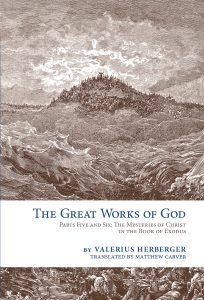 “Behold, I come, in the book it is written of Me.” With this “profound and wonderful word” Valerius Herberger began his remarkable set of meditations in The Great Works of God, Parts Five and Six: The Mysteries of Christ in the Book of Exodus. Now Matthew Carver has produced a highly readable translation of this Lutheran pastor’s devotional commentary.
“Behold, I come, in the book it is written of Me.” With this “profound and wonderful word” Valerius Herberger began his remarkable set of meditations in The Great Works of God, Parts Five and Six: The Mysteries of Christ in the Book of Exodus. Now Matthew Carver has produced a highly readable translation of this Lutheran pastor’s devotional commentary.
This is no dry academic work, although its author was by no means devoid of linguistic expertise and theological erudition. Rather, it is a series of animated exegetical studies, complete with vivid applications, that reflect Herberger’s conviction that the point of scholarship in the service of the Church is ultimately worship. Each of the 134 meditations begins with the word “Jesus.” Even though some 400 years separate our own age from that of Herberger’s, anyone who wishes to learn how to read the Book of Exodus from a Christocentric perspective today will find much that is still uniquely valuable in this splendid volume from Emmanuel Press.
-Dr. Carl P. E. Springer
Now available for pre-order: He Restores My Soul
 Pre-order He Restores My Soul and save 10%! You’ll find a complete list of authors and topics on the book’s main page along with a link to the cover artist. Stay tuned in the coming months as we reveal the cover art and more details about this unique project!
Pre-order He Restores My Soul and save 10%! You’ll find a complete list of authors and topics on the book’s main page along with a link to the cover artist. Stay tuned in the coming months as we reveal the cover art and more details about this unique project!
While you’re waiting for the release of this new book, have a look at Katie Schuermann’s He Remembers the Barren, the book that served as inspiration for He Restores My Soul.

Let’s stay in touch! To receive the most current information on our products and new releases, join our email list today!
